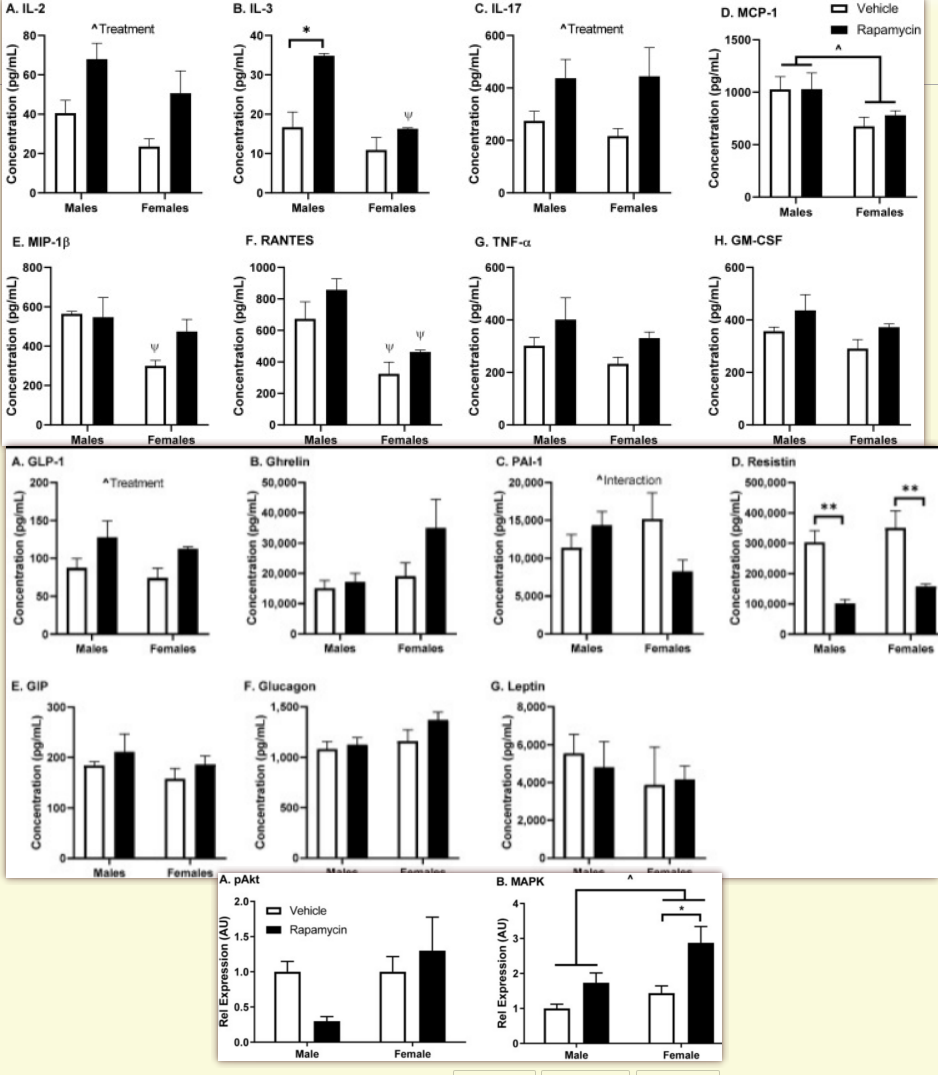Rapamycin
links: reference:
- For anyone worried about losing their gains on rapamycin: mTOR Inhibition Induces Upstream Receptor Tyrosine Kinase Signaling and Activates Akt https://www.geneticlifehacks.com/rapamycin-mtor-and-your-genes/ 11-10-2021
Rapamycin (Sirolimus)
 #
#
Was originally discovered in the soil of Easter Island in 1975 from Streptomyces tsukubensis. Wtf. And that molecule: a macrolide.
-
It inhibits Candida and other fungal infections, but it supresses the immune system by inhibiting activation of T Cells and B cells via reducing their sensitivity to IL-2.
- Althoug, these things seem to have increased serum concentrations following treatment.
-
Treatment with TOR-I results in a decrease in testosterone level, and an opposite increase in LH. Moreover, spermatogenesis seems to be disrupted by TOR-I and FSH levels are increased. R
-
Independently increases PSD-95, NR2B expression, and glutamate recycling
-
High levels in the periphery promote Beta Cell rest (somehow less sensitive to glucose)
-
[Alternative rapamycin treatment regimens mitigate the impact of rapamycin on glucose homeostasis and the immune system]
-
Fasting and rapamycin: diabetes versus benevolent glucose intolerance
- This mirrors the effect of fasting and very low calorie diets, which improve insulin sensitivity and reverse type 2 diabetes, but also can cause a form of glucose intolerance known as benevolent pseudo-diabetes.
-
Induces Erythropoietin resistanec in kidney transplant patients - levels increase.
-
Intranasal produces 25x+ brain concentrations with 1% the systemic exposure.
-
Effects of Rapamycin on Insulin Brain Endothelial Cell Binding and Blood-Brain Barrier Transport
- Acute did not affect BBB binding but chronic insigifnificantly slowed BBB transport. It slightly raised serum concentration of insulin and:
-

-
Rapamycin for longevity: opinion article this is pretty informal
- It can be regarded not as an “immunosuppressant” so much as reducing hyperimmunity. That’s what it’s used for in organ transplants
- Whether this is by insulin or nutrients, overactivation of (mTOR->)S6K inhibits insulin signaling,
- [Nutrient overload, insulin resistance, and ribosomal protein S6 kinase 1, S6K1]
- Amino acids mediate mTOR activation via class 3 PI3K (aka hVps34), as opposed to class 1. Infusion of Amino Acids leads to S6K1 activation and inhibition of insulin-induced class 1, leading to insulin resistance.
- IRS-1 downregulatory phosphorylation is always by means of JNK??
-
A central role for JNK in obesity and insulin resistance
- Absence of JNK results in decreased adiposity, significanty improved insulin ressistance and recepto signalling capacity.
-
A central role for JNK in obesity and insulin resistance
- [Nutrient overload, insulin resistance, and ribosomal protein S6 kinase 1, S6K1]
-
Balancing Akt with S6K implications for both metabolic diseases and tumorigenesis #
- Ketogenic diets can cause symptoms of starvation psuedodiabetes (SPD)
-
Rapalogs downmodulate intrinsic immunity and promote cell entry of SARS-CoV-2
Disease #
- One thing to keep in mind about it potentiating Amyloid β in some pathologies is that the stuff may be protective!
-
Intranasal rapamycin ameliorates Alzheimer-like cognitive decline in a mouse model of Down syndrome
- Preventing systemic alterations avoids imunosuppresant effects in ther periphery. But the brain?
-
Rapamycin Activates Mitophagy and Alleviates Cognitive and Synaptic Plasticity Deficits in a Mouse Model of Alzheimer’s Disease Get access Arrow
- Effectively alleviates defecits of plasticity in APP models, promoting lysosome-mitophagosome fusion. Impedes Cytochrome C-mediated apoptosis, etc.
- Restoration of aberrant mTOR signaling by intranasal rapamycin reduces oxidative damage: Focus on HNE-modified proteins in a mouse model of down syndrome
-
mTOR Attenuation with Rapamycin Reverses Neurovascular Uncoupling and Memory Deficits in Mice Modeling Alzheimer’s Disease
- Restores eNOS-dependent cerebrovascular function funcions in AD models. (Since mTOR inhibits eNOS)
- Intranasal administration dring any point in the lifespan, besides late stage alzheimers, where it increases the toxicity of Amyloid β, will suppress its formation and disease progression and increase memory/cognition/mood.
-
Therapeutic effects of rapamycin on MPTP-induced Parkinsonism in mice
- IGF-1 inhibition mitigates MPTP-induced neurological dysfunction.
Supplementation #
Stable as powder at room temp for 6 years. Its half life is basically a good 24 hours.
- 1mg every day or so. Intranasal in MCT oil (which has been done in studies - C8 is contentious) or just straight up. Dissolving it greatly increases efficacy according to Debonaire - makes sense.
- Apparently doses under 3mg have dramatically increased bioavailability
- Transcutol for cosmetic, topical application.
- Balyhoo does 4oz of CeraVe cream, .5-1mL transcutol and 3-6mg rapamycin.